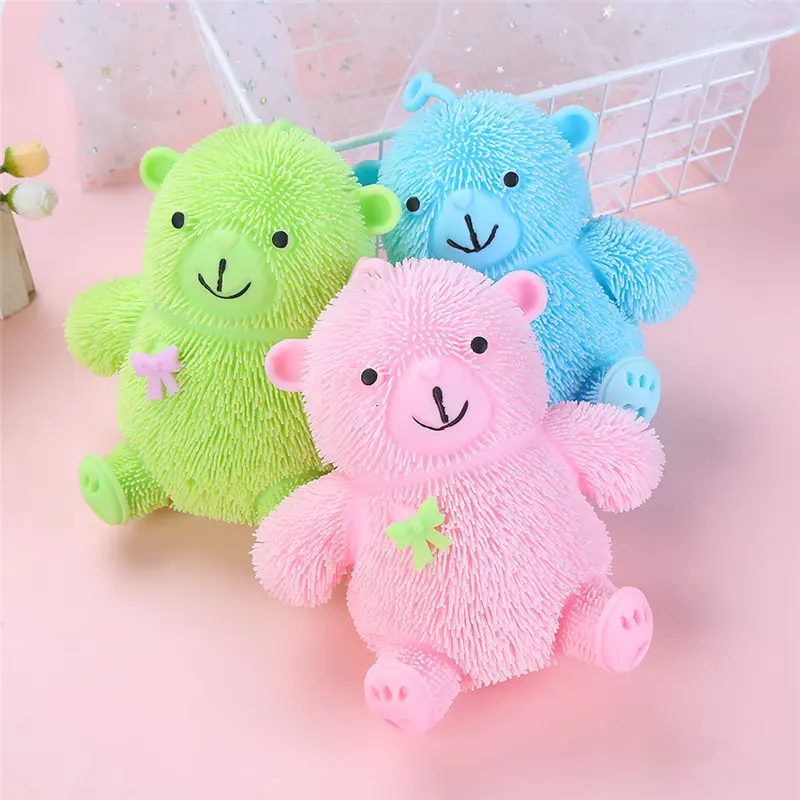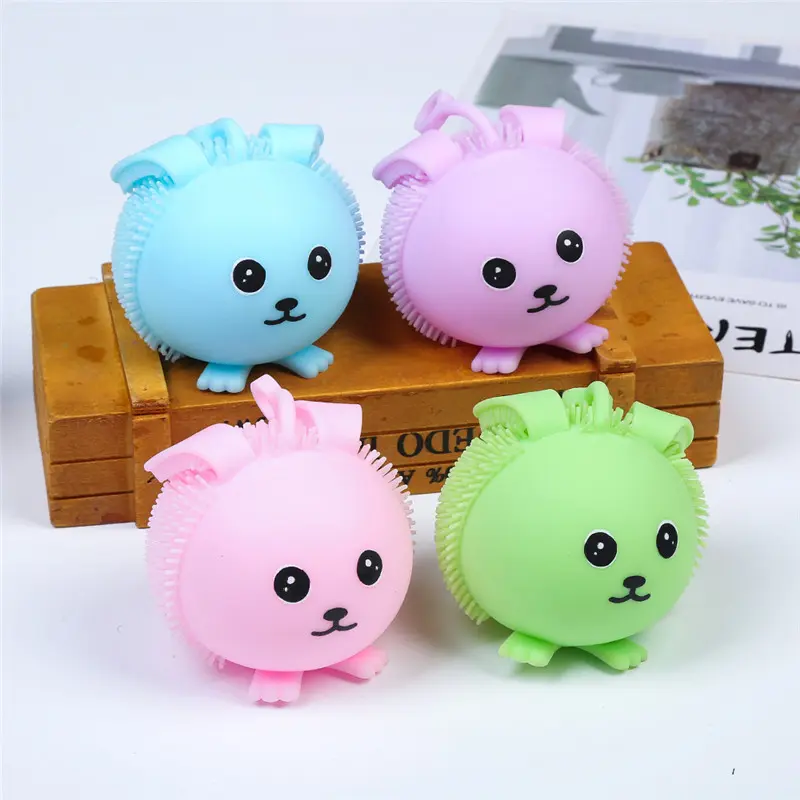How Can Buyers of Decompression Squeezing Toys Accurately Assess a Factory’s Supply Capacity?
As a global professional wholesale buyer of decompression squeezing toys, have you ever encountered these challenges: unexpected supply disruptions during peak season, material defects in bulk shipments, goods detained by customs due to missing compliance documents? The root cause of these issues often lies in an incomplete initial assessment of the factory’s supply capacity. The production characteristics of decompression squeezing toys (such as material safety, process stability, and production capacity flexibility) dictate that a factory must meet both “hard” and “soft” standards. This article will teach you how to systematically assess a factory’s supply capacity across five core dimensions, laying a solid foundation for long-term, stable procurement.
1. Core Foundation: Production Capacity and Supply Chain Stability – Avoiding the Fatal Risk of “Orders in Hand, No Stock”
For wholesale buyers, “on-time delivery of sufficient goods” is the primary prerequisite for cooperation, and production capacity and supply chain stability directly determine this. Three key indicators should be considered during the evaluation:
First. Production Capacity: Look beyond verbal promises, focus on actual production capacity data.
Production Line and Equipment Configuration: Conduct an on-site inspection or request a video from the factory to determine whether there is a separate silicone/TPR raw material mixing workshop, the number of molding lines (recommended to be at least five to meet mass production requirements), and the degree of automation (e.g., automatic demolding equipment can reduce manual errors and increase daily production capacity). For example, a mature factory should have a stable daily production capacity of 5,000-10,000 pieces (based on standard-sized Squeezable toys). The factory should also provide production reports (e.g., daily/weekly production records) for the past three months to verify its capacity.
Peak Season Flexible Capacity: Demand for Squeezable toys exhibits significant seasonality (e.g., surges in orders before holidays and promotional seasons). Inquire about the factory’s “peak season maximum capacity”—whether it can be increased by adding shifts or temporarily relocating equipment (e.g., from 10,000 pieces/day to 15,000 pieces/day) and clearly define the ramp-up period (e.g., response time within three days, full production within seven days). Avoid choosing a factory with “fixed capacity,” as this can lead to supply shortages during peak season.
2. Supply Chain Management: Full-chain support from “raw materials” to “finished product”
Raw material inventory and supplier stability: The core raw materials for the “decompression squeeze” (such as food-grade silicone and environmentally friendly TPR) directly impact product quality and delivery speed. Confirm the factory’s: ① Whether it maintains a safety inventory of at least 15-30 days of raw materials (to cope with price fluctuations or temporary supplier disruptions); ② Whether it has two-three alternative suppliers for core raw materials (e.g., if the main supplier is in Guangdong, the backup supplier is in Zhejiang to mitigate regional logistics disruptions and production disruptions); ③ Whether it can provide raw material procurement documentation (such as customs declarations and raw material testing reports) to ensure compliance at the source.
Logistics Partnership: If the factory is responsible for part of the logistics process (e.g., domestic shipping to the port), it’s important to understand whether the logistics provider they partner with has experience in international trade transportation (e.g., familiarity with FCL/LCL operations and connections to major global ports) and whether they have contingency plans (e.g., whether they can switch to a nearby port in the event of port congestion).
Second, Key Threshold: Quality Control System – Avoiding the Cost Risk of “Defective Product Losses”
As intimate toys (especially some designed for children), the quality of decompression squeeze toys directly impacts the buyer’s brand reputation and after-sales costs. When evaluating a factory’s quality control capabilities, it’s important to focus on “full-process testing” and “standards compliance”:
1. Full-process quality inspection: A rigorous process from “material intake” to “shipment”
Incoming material testing (IQC): Factories are required to provide raw material testing standards – for example, silicone must be tested for “Shore hardness” (20-30 degrees is recommended for standard squeeze toys to ensure a balance between softness and durability) and “hazardous substance content” (e.g., phthalates and heavy metals must comply with EU REACH regulations). Each batch of raw materials must be accompanied by a third-party testing report (e.g., SGS report), and the factory must retain testing records to avoid discrepancies between the report and the actual product. In-Process Quality Control (IPQC): A real-time spot check mechanism is required throughout the production process. For example, after molding, products must be inspected for bubbles/burrs on the surface and for uniform filling (to prevent cracking during kneading). It is recommended that factories inspect 50-100 units per hour and maintain inspection records to facilitate subsequent tracing.
Finished Product Quality Control (FQC): Full batch inspection is required before shipment. For example, a random sampling of 1% of products must undergo a durability test (500 consecutive kneading cycles without cracking) and a seal test (for refillable kneading toys, the toys must be inverted for 24 hours to ensure no liquid or powder leaks). Finished products must also be accompanied by a “qualified label” (with the batch number and production date for easy after-sales traceability). 2. Compliance with International Standards: Matching Global Market Access Requirements
As a global buyer, you need to ensure your products comply with the regulatory standards of your target markets. Therefore, a factory’s compliance certification capabilities are crucial:
Product Certification: At least EU CE certification (EN 71-1/2/3 toy safety standards) and US CPSIA certification (phthalate limits and lead content limits) are required. If targeting Japan, ST certification is also required. Factories are required to provide original certifications (not copies) and confirm that the certificates are valid to avoid customs clearance failures due to expired certifications.
Factory Certification: Prioritize factories certified by ISO 9001 quality management systems and BSCI (Business Social Compliance Initiative) – the former demonstrates standardized quality control processes, while the latter ensures that production processes comply with human rights and environmental requirements. (Some European and American buyers require BSCI reports before cooperating.)
III. Essential for Foreign Trade: Compliance and Documentation Capabilities – Avoiding Delivery Risks Caused by Customs Clearance Delays
In global wholesale procurement, incomplete documentation or incorrect information are common problems that lead to goods being held up at customs. A factory’s compliance documentation capabilities directly impact delivery efficiency:
1. Export Document Completeness: Covering Full Customs Clearance Requirements
Basic Documentation: Confirm whether the factory can quickly provide “commercial invoices, packing lists, and bills of lading” (must be consistent with order information, such as product model, quantity, and HS code – JieZiNieLe recommends checking the HS code: 3926909090), and that the document format complies with the target port’s requirements (e.g., European ports require English documents, while some Middle Eastern ports require Arabic translations). Special Documents: Based on the requirements of the target market, confirm whether the factory can provide a “Certificate of Origin” (such as a FORM A GSP Certificate of Origin, which can help buyers reduce or exempt tariffs) and a “Sanitary Certificate” (some countries require additional documentation if the product comes into contact with skin). The processing timeline should be clear (e.g., a Certificate of Origin takes 3-5 business days to avoid delays in customs clearance).
2. Intellectual Property Compliance: Avoiding Legal Risks of “Infringement Claims”
Compression-relieving squeeze toys often feature designs (such as cartoon-like shapes or special textures). Therefore, confirm the factory’s: ① Whether all product designs have independent intellectual property rights (providing patent certificates) or can provide a “Certificate of Authorized Production” (if the buyer provides design drawings); ② Whether the factory has signed an “Intellectual Property Protection Agreement,” clearly stating that if the buyer is sued for design infringement, the factory will assume full responsibility (such as compensating for losses and assisting in resolving legal disputes).
IV. Value-Added Partnership: Customization and Order Responsiveness – Matching the Flexible Needs of Wholesale Procurement
Global wholesale buyers often have personalized needs (such as custom colors, logo printing, and size adjustments). A factory’s customization capabilities and order responsiveness directly determine the flexibility and efficiency of the partnership:
1. Customization Capabilities: The Ability to Transform Prototypes into Mass Production
Prototyping Cycle and Cost: Ask the factory about the “custom design prototyping cycle” (standard designs should be completed within 3-5 days, complex designs within 7 days), the “prototyping fee” (whether it can be deducted from subsequent bulk orders), and the “prototyping confirmation process” (e.g., first submitting a 3D design for confirmation, then producing a physical sample to avoid wasted time and repeated revisions). Customized Mass Production Compatibility: Confirm whether the custom design can be adapted to the factory’s existing production lines—for example, whether a specially shaped Squeezable Toy requires additional molds (mold development time and cost), and whether mass production will impact production capacity (for example, whether the daily production capacity for custom designs can be maintained at or above 80% of that for standard designs). This helps avoid situations where “proofing is successful but mass production is difficult.”
2. Order Response Speed: Efficient communication from “inquiry” to “after-sales service.”
Inquiries and Quotes: Professional factories should respond to inquiries within 24 hours. Quotes should include detailed cost structure (raw materials, processing, packaging, logistics costs), minimum order quantity (MOQ), production lead time, and payment method (e.g., T/T 30% advance payment, 70% against a copy of the bill of lading). Avoid vague terms (e.g., “price negotiable” or “week to be determined”). Order Tracking and After-Sales Service: After the partnership is complete, a dedicated contact person (e.g., a foreign trade salesperson and a production assistant) must be appointed. Production progress must be regularly updated (e.g., weekly production photos/videos). Any issues (e.g., raw material delays) must be promptly communicated to the buyer, and solutions must be provided (e.g., adjusting production plans, prioritizing certain orders). After-sales service responses must be provided within 48 hours (e.g., upon receiving a quality complaint, a return, exchange, or restocking solution must be provided within 2 days).
V. Long-term Guarantee: Cooperation Terms and Risk Assumption – Reducing the Potential Risk of Cooperation Disputes
In addition to the factory’s strength, the rationality of the cooperation terms is also a key factor in evaluating supply capabilities, with particular attention paid to “risk assumption” and “rights protection”:
1. Delivery Time and Breach of Contract Clauses
The contract should clearly state the “specific delivery date” (e.g., “production to be completed within 15 days after receipt of advance payment, and delivery to Ningbo Port within 5 days”), rather than the vague “approximately 20 days”;
Liquidated damages for delayed delivery should be stipulated (e.g., “1% of the total order amount will be deducted for each day of delay”), and the scope of “force majeure” should be clearly defined (e.g., epidemics, earthquakes, etc., to prevent the factory from arbitrarily citing “force majeure” as an excuse to avoid liability). 2. Quality Issues and Returns and Exchanges
Clearly define the “quality issue determination criteria” (e.g., “a defective rate exceeding 1% is considered a batch quality issue”). If a problem occurs, the factory must cover all return and exchange costs (including round-trip logistics costs) and re-ship qualified products within 7 days.
Agree on a “warranty period” (e.g., within 3 months after the finished product leaves the warehouse, if it is damaged due to a production process issue, the factory must re-ship it free of charge).
3. Flexible Payment Methods
Professional factories offer flexible payment options based on the stage of cooperation: New customers can negotiate “T/T 30% advance payment, 70% upon seeing a copy of the bill of lading”; long-term customers can strive for “T/T 20% advance payment, 80% monthly payment” or “L/C payment” (to reduce financial risk) to avoid factories demanding “100% advance payment” (which is often the case with small or high-risk factories).
Conclusion: Choosing the right factory means choosing the right long-term profitable partner.
For global wholesale buyers of squeeze toys, a factory’s supply capacity isn’t just about whether it can deliver; it’s also about whether it can stably, compliantly, and efficiently deliver products that meet market demand.
Post time: Oct-22-2025

